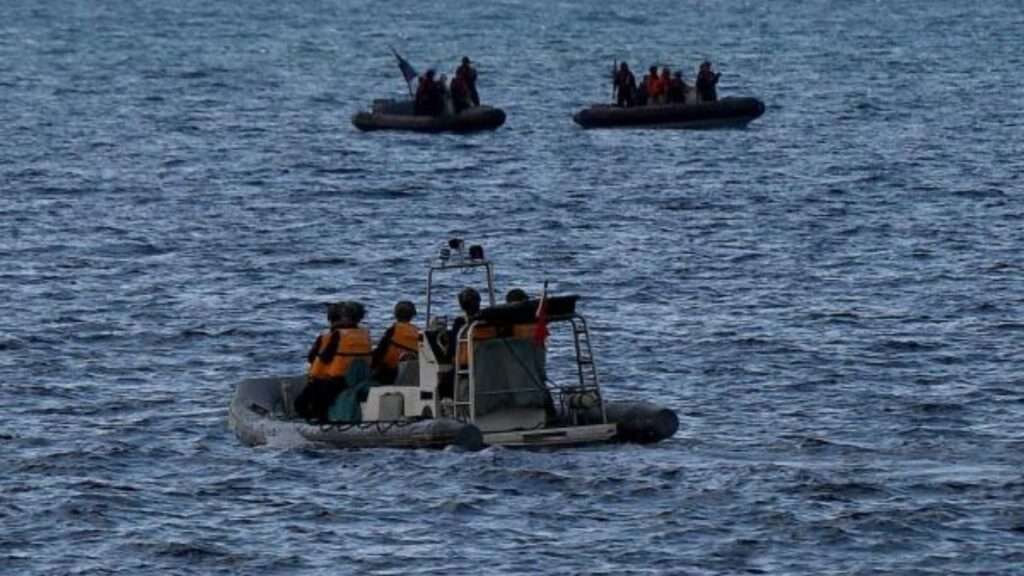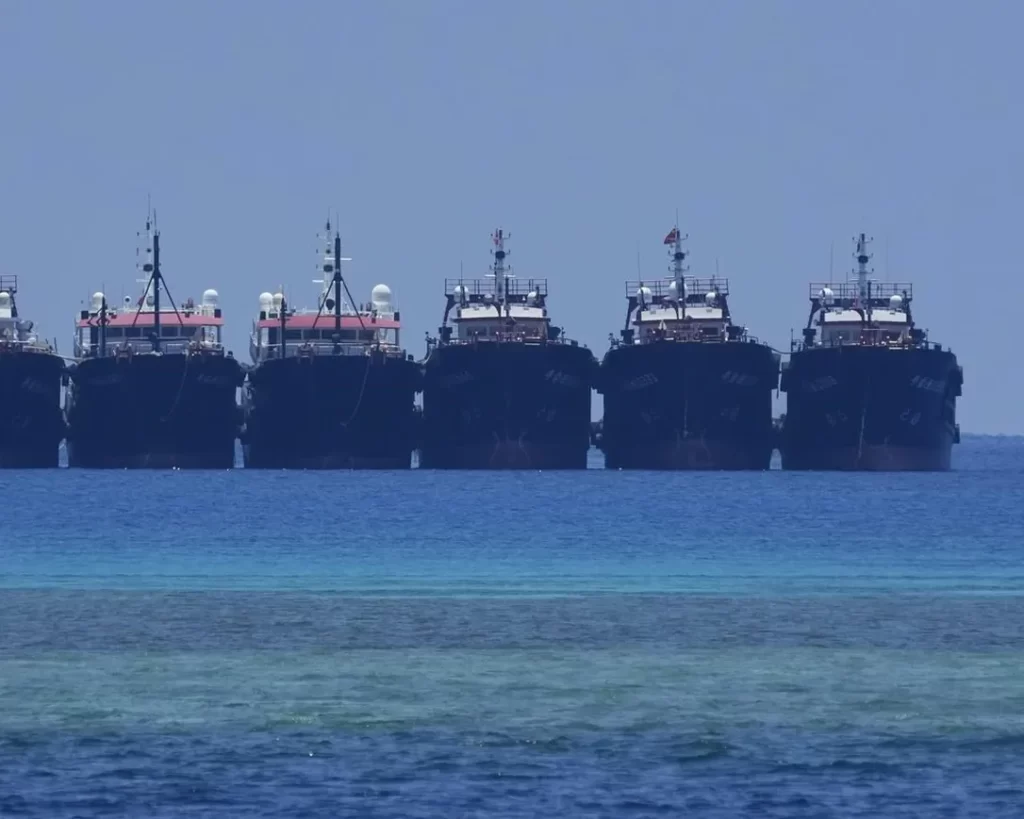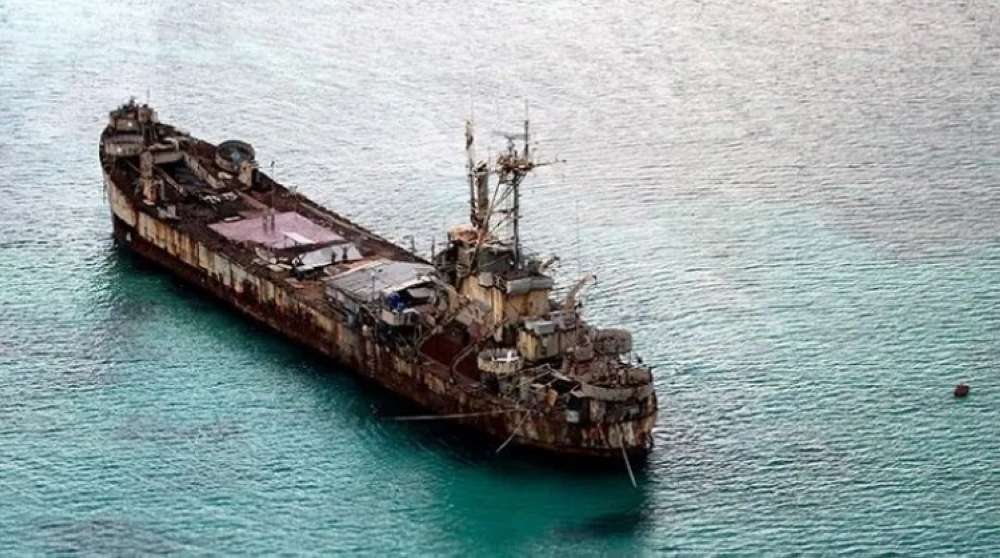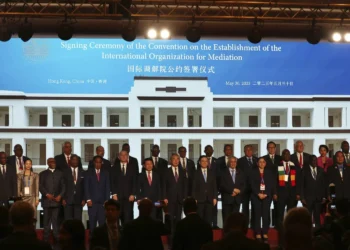A Chinese coast guard ship blocked a Philippine patrol vessel steaming into the disputed shore of South China Sea, causing a distressing near-coalition in the latest act of Beijing’s aggression in the strategic waterway.
The high sea face-off between the larger Chinese ship and the Philippine coast guard’s BRP Malapascua near Second Thomas shore was among the tensed moment, it and another Philippine vessel have encountered in a week-long patrol in one of the world’s hottest contested waterway.
The Philippine coast guards had invited a small group of journalists to join the 1,670 kilometer patrol for the first time, as part of the new Philippine strategy to expose China’s increasing aggression in the South China Sea, where an estimated $5trillion in global trade transacts, every year.

The Malapascua and another Philippine coast vessel, the BRP Malabrigo, journeyed to the frontlines of a long standing territorial dispute. They cruised past a string of widely scattered Philippine-occupied and claimed island, islet and reefs, looking for signs of encroachment, illegal fishing and other threats.
In the areas occupied or controlled by China, the vessel received some radio warnings in Chinese language and halting English, to immediately vacate what China claims, it was their “undisputed territories,” and ordering threats of defiance.
Tensions remained in the Philippines occupied Second Thomas shore in the island, the most fiercely contested region in the busy sea channel. The Chinese ship continued to issue warnings, as two Philippine patrol vessel approached the shore’s shallow turquoise water, for an underwater survey. This was about 121 miles west of Philippine island of Palawan.

After several heated radio exchanges, Chinese coast guard caller warned of an unspecific adversarial of action. The Chinese coast guard rapidly approached and shadowed the smaller Malapascua and Malabrigo. When the Malapascua maneuvered towards the shore of the sea, the Chinese ship suddenly shifted to block it, nearly 36-46 meters from its bow, said the commander of the Malapascua vessel, Captain Rodel Hernendez .
To avoid coalition, the Philippine vessel suddenly withdrew his direction, then shut off its engine, to bring the vessel to a halt. The Filipino personnel aboard the vessel, and journalists, were gripped in fear after witnessing the short near-coalition of the Chinese and Philippine vessel.

China has long demanded that Philippine withdraw its small contingents of Naval Forces and tow away the actively commissioned but crumbling BRP Sierra Madre. The Navy ship was intentionally marooned on the shore in 1999, and serve as fragile symbol of Manila’s territorial claim to the small island.
Chinese vessel often blocked vessels delivering food and other supplies to the Filipino sailors on the ship, including some few days ago, Hernandez disclosed. As tensions continue to grow between the two nations over the South China Sea, the Chinese Foreign Minister, Qin Gang, was recently in Manila, where he held talks with his Philippine counterpart and President Ferdinand Marcos Jr. China was willing to work with the Philippine to resolve differences and deepen ties, Qin said.
In other developments, another Philippine-claimed reef called whitsun, the vessel spotted more than 100 suspected Chinese militia ships, arrayed side by side in several clusters in the shadows. China claimed the huge trawler-like ships were nothing but shipping vessels, but Manila’s coast guards suspect they are being used surveillance or to hold the reef for fortune.
The Asian Flashpoint
The territorial conflict involving China, Philippine, Vietnam, Malaysia, Taiwan and Brunei, have long been regarded as an Asian flashpoint and delicate fault line between the U.S and China, in the region.
Whiles U.S lays no claims on the South China Sea, it has deployed its warships and fighter jets for patrols and military exercises with regional allies to uphold freedom of navigation, which the U.S believes as an American interest.
Beijing has criticized the recent the agreement by the Philippines and the U.S to grant American Forces access to additional Filipino military camps. China fears the agreement would grant the U.S access to military staging grounds and surveillance in the northern Philippine across the see from Taiwan, which Beijing claims as its territory, and in province facing the South China Sea, which Beijing claims virtually in its entirety.
READ ALSO: Chinese Foreign Minister Meets Philippine Counterpart







